Semi-finalists announced for the 2015 Buckminster Fuller Challenge
By Bustler Editors|
Wednesday, Aug 26, 2015
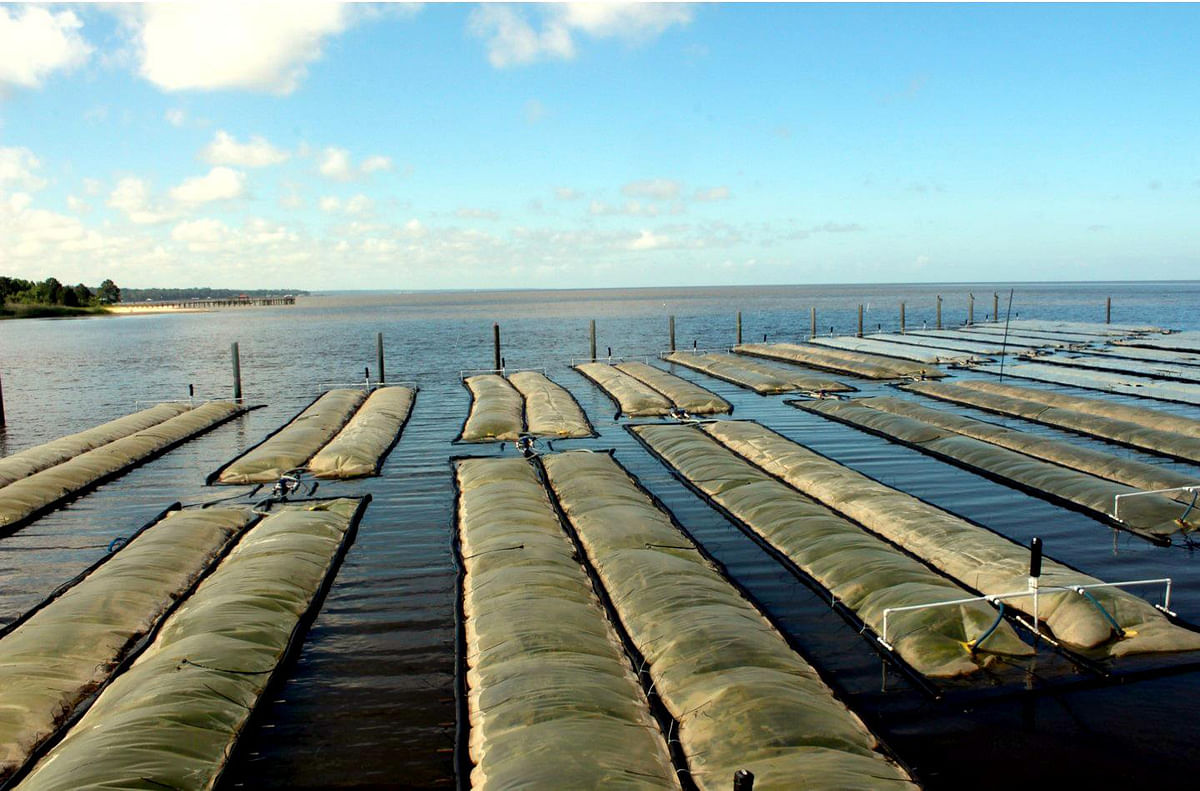
Related
The Buckminster Fuller Institute announced today the semi-finalists for the prestigious 2015 Buckminster Fuller Challenge. Every year, the international challenge searches for the most inventive and effective holistic solution strategies to the world's most pressing problems. Multi-disciplinary teams work hard for a chance at winning the $100,000 grand prize.
The eighth cycle is already off to a competitive start with submissions coming in from 136 countries, the Challenge's most diverse pool by far. After rigorous evaluations by the Challenge Review Committee, 15 initiatives were selected as semi-finalists.
The winner will be revealed during a ceremony at the Wythe Hotel in New York on November 12.
Check out the semi-finalist projects right below.
Algae Systems: The Water/Energy Nexus: "Algae Systems has developed an innovative 'industrial ecology' process that uses locally-sourced algae to provide cost-effective wastewater treatment, removes CO2 from the atmosphere and yields clean water, carbon-negative bio-fuels, and fertilizers as its only end products. There has been enormous interest in algal bio-fuels, but efficiency issues have yet to be fully resolved; Algae Systems’ unique focus on highly cost-competitive water purification as its primary income generator, with bio-fuel and fertilizer providing secondary income streams, is a visionary strategy. Their demonstration plant in Daphne, Alabama is a testing ground for upcoming commercial plants in California and Jamaica—it showcases a system that could revolutionize waste treatment globally by creatively responding to Buckminster Fuller’s guiding principle that "pollution is nothing but the resources we are not harvesting."
596 Acres Living Lots: "Living Lots, an adaptable, open source land-access platform and dynamic community empowerment initiative, works to identify unused urban spaces and catalyzes efforts to reclaim them as focal points for civic engagement. Living Lots allows formerly disenfranchised residents to both collaboratively engage with and directly challenge top-down city planning. In New York, more than thirty publicly owned vacant lots have been transformed into vibrant neighborhood spaces, a dozen of them already made permanent through transfers to the Parks Department or leases with public authorities. Living Lots has been rapidly spreading through partnership with domestic organizers in Philadelphia, Los Angeles and New Orleans, as well as internationally in Australia, Canada, and the UK, all leveraging the power of policy cross-pollination, on the ground advocacy, and technology as forces to democratize cities."
Agrarian Trust: "Agrarian Trust’s goal is to nurture the birth of a paradigm shifting, cooperatively owned farmland commons. With 400 million acres of America’s farmland transitioning in ownership and 70% of farmers set to retire over the next two decades, and with very few young farmers able to afford their own properties, the risks of the consolidation of farmland into the hands of a small handful of giant corporations and of the irreversible dominance of a system of industrial agriculture are very real unless new mechanisms for intergenerational stewardship are forged. Agrarian Trust seeks to develop and experiment with a range of holistic strategies and models to address this crisis: nonprofit trusts, gifts and bequests of farmland, the creation of farmland commons with lifetime leases for young farmers, and democratic management by regional committees, shareholder, and investor based land acquisition."

bioMason: "Approximately 85% of global construction uses masonry; over 1.23 trillion clay bricks are manufactured every year, and cement manufacture is among the most carbon and polluting of industries. As an alternative to traditional clay brick manufacturing, which is responsible for approximately 800-million tons of global CO2 emissions every year and many deaths globally from air pollution, bioMason 'grows' durable bricks comparable in strength to calcite-cemented sandstone by using biomass, aggregate, nutrients, minerals, and bacteria to produce a natural bio-cement in less than three days in ambient temperatures, a process similar to how corals form through bio-mineralization/calcium carbonate fixation. The nutrients and minerals required are globally abundant renewable resources but may be also extracted from industrial waste streams, contributing to remediation efforts and making this mode of brick production even more ecologically beneficial. This highly promising project is an inspiring exemplar of a biomimetic strategy that finds non-polluting, benign solutions to human needs by emulating natural processes."
Casa Pueblo de Adjuntas: Forest School: "The Forest School is an outgrowth of Casa Pueblo, a grassroots citizens’ movement that emerged 35 years ago in Puerto Rico to prevent open-pit mining in the island’s central mountain region. After 15 years of struggle Casa Pueblo succeeded in preventing what would have been irreversible damage to the core of the island’s ecological health and a cascade of destructive socio-economic effects, and helped create Puerto Rico’s first state forest, protecting watersheds and 19 separate landholdings linked by biological corridors, which became Puerto Rico’s National Model Forest, an inspiring model for the global community. Casa Pueblo evolved into a vibrant community organization, one of the key anchors of Puerto Rico’s environmental movement. It founded The Forest School, an institution in the heart of the National Forest, whose curriculum includes agro-ecology and biodiversity, climate change, water and renewable energy, and community development. The Forest School is a uniquely inspiring model—an educational institution that grew out of a grassroots people’s movement to guarantee that future generations would manage the commons sustainably, in perpetuity."
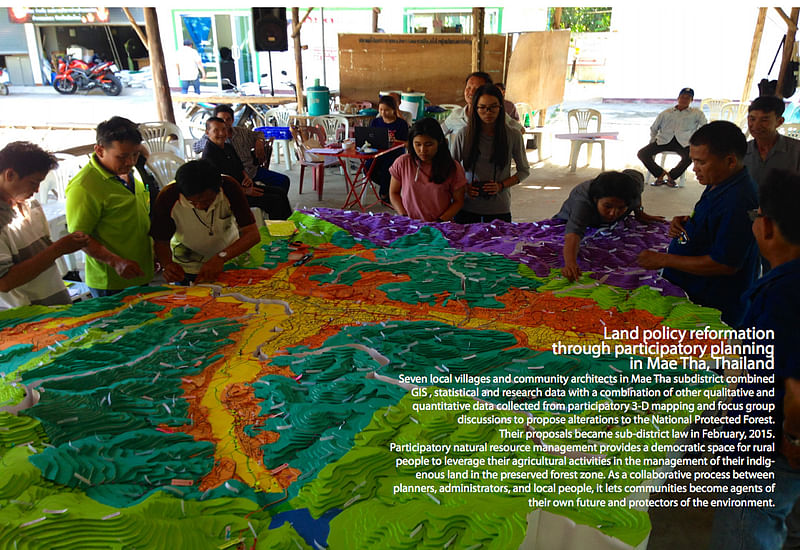
Community Architects Network: "The Community Architects Network (CAN) is a coalition of architects, planners, builders, engineers, lecturers and volunteers active in participatory design, planning, and development across 19 countries in Asia, united by their conviction to “let the people be the solution”, and using the design process as a vehicle to create the conditions for positive social and ecological transformation. CAN has created a facilitation network, sharing expertise in order to empower grassroots efforts, rather than deploying expert professionals with outside visions. Through handbooks, action-based workshops, and community architecture trainings, CAN offers a platform of exchange to engage governments, local authorities, universities, and professionals in people-driven processes."
Sandele Eco-Retreat and Learning Centre: "Sandele Eco-Retreat and Leaning Centre is a unique eco-tourism project in the politically and logistically challenging environment of South Gambia in West Africa. It is exemplary not only in its passionate dedication to regeneration, sustainability, wildlife protection, renewable energy, the use of natural building materials, and local citizens' education and personal development, but in its unusual commitment to transferring ownership to the local people: in 19 years, total ownership of Sandele Eco-Retreat will be gifted to the community. Meanwhile, a payment toward community development is made from every bed night sold, and the management works very closely with the local population, providing employment and offering technical expertise to help neighboring villages develop resilient infrastructure. Sandele is also raising standards of living through its spin-off construction company, which builds sustainable, attractive low-cost housing."
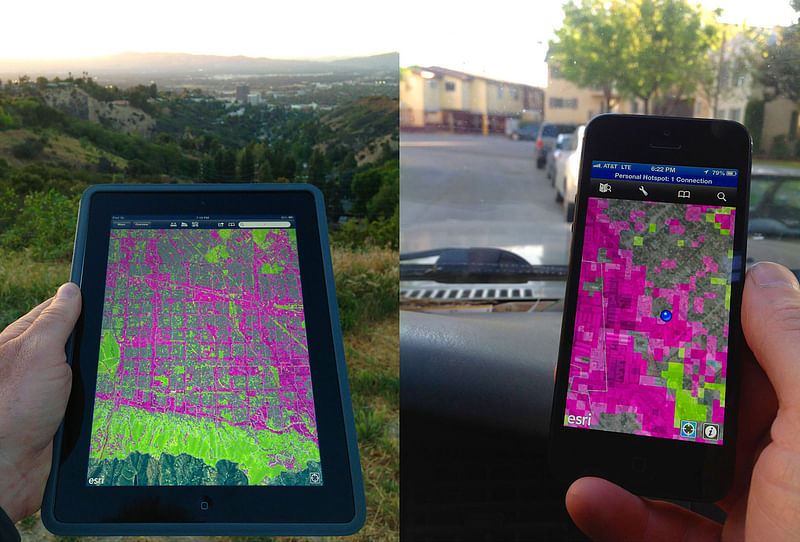
Drylands Resilience Initiative and HAZEL: "The Drylands Resilience Initiative is a collaborative, multi-year project working with a number of research partners to create a water-smart future for Los Angeles through the development of Hazel, a first-of-its-kind computational engine that will permit both granular and holistic analyses of overland surface and groundwater flows in the context of the built and natural environments. Founded on the belief that 'design has an unrecognized potential to fuse science and policy, catalyzing public imagination in the face of climate challenges', DRI is working to make Hazel a tool that will support coordinated, whole-systems thinking and decision-making at regional levels; shape water-smart urban planning, zoning and building policy; build a water-conversant citizenry; transform design education; and guide societies to make the most appropriate, sustainable water choices."
Previously on Bustler: Arid Lands Institute’s Drylands Resilience Initiative wins $100K 2015 Latrobe Prize
GreenWave: "GreenWave offers a radical new form of aquaculture: multi-species 3D ocean farming. Instead of growing vulnerable monocultures, GreenWave uses a system of floating ropes on which seaweed, scallops and mussels thrive, below which lie stacked oyster and clam cages. This approach creates a vibrant, low-cost, high-yield, zero-input system that can produce very large quantities of sea vegetables and shellfish per acre per year. The system is not only non-polluting but actually restores aquatic ecosystems by filtering and cleaning millions of gallons of seawater, sequestering nitrogen and carbon, and providing habitat for many wild marine and bird species. GreenWave's crops can be sources of food, fertilizers, animal feeds, pharmaceuticals, cosmetics, bio-fuels and much more."
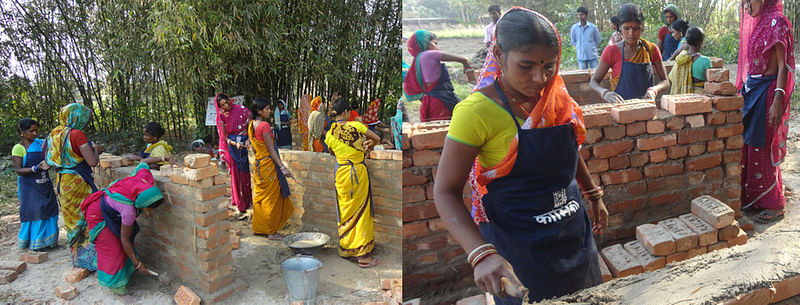
Mahila Housing SEWA Trust: Climate Resiliency Initiative: "This new project of the SEWA trust, an India-based NGO with a track record working for “dignified homes, dignified work, and dignified lives for women working in the informal economy” since 1994, is an effort to develop new models that will help poor urban dwellers in South Asia build resilience to the rising challenges of climate change—including increasing heat waves, flooding, water shortages, and vector borne diseases. Their pilot program is in Ahmedabad, a city vulnerable to climate impacts, and initiatives in four other Indian cities as well as in Katmandu and Dhaka are slated to follow. The SEWA team is skilled at engaging regional and municipal governments, scientific experts, and engineers in developing strategies while simultaneously nurturing democratic, grassroots decision-making among the urban poor themselves, and training women to collect and interpret scientific data. The climate resiliency project involves risk assessment and mapping on precipitation, temperature impacts, water flows, and health trends, and the subsequent deployment of the most appropriate technologies including solar-powered ventilation and electricity generation and water harvesting and storage."
Omega Global Initiative: "OMEGA, which began as a NASA biofuels research project to meet the demand for liquid fuel without using land, freshwater, or fertilizer, evolved into a broad-reaching plan for a 'system of systems' to integrate algal biofuels production with water recycling, solar energy production, and compatible aquaculture, among many other components. This year the non-profit OGI was formed by one of the lead research scientists of the original Omega initiative to provide a detailed “roadmap” for the implementation of the Omega vision in coastal communities, transforming wastewater into a resource that produces algal biomass and potable water, expands local food production, increases the use of solar power, and supports local economies through jobs and new sources of revenue. OGI is currently seeking to establish small-scale demonstration projects in diverse locations to adapt and evolve the technology, with the primary goal to pave the way for large-scale future uptake."
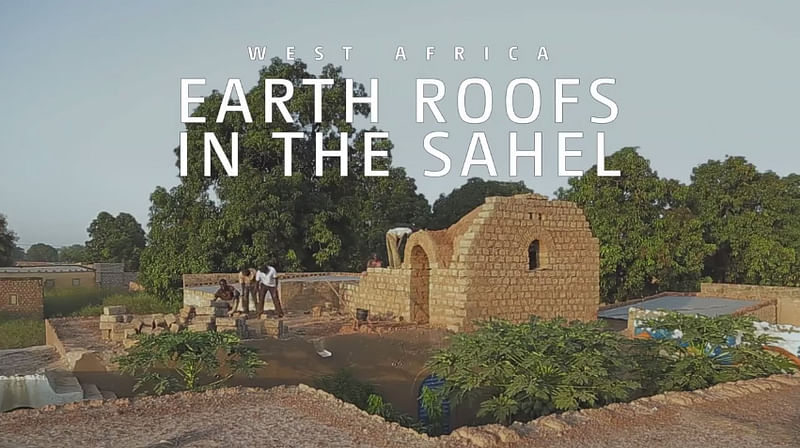
The Nubian Vault Programme: A Roof, A Skill, A Market: "This project has a highly successful 15-year track record of building low cost, high quality, healthy, culturally and climatically appropriate dwellings and buildings throughout the physically and politically challenging Sahel region of Africa. They resurrected an ancient Nubian vault structure that they have systematized, adapted and are spreading throughout a vast, ever growing swath of Africa in hundreds of villages, and now urban areas as well. This technique uses low-cost or free durable, sustainable, local, natural materials: no imported, expensive corrugated iron sheets, sawn timber or concrete, whose costs exacerbate poverty and provide unhealthy living conditions. The project team has created a large and quickly growing pool of local masons who learn as they work and then pass on their skills, a viral economic cascade of benefits to communities. Their strategy is integrated into local economic circuits, relies on locally sourced materials, and is creating autonomous, sustainable markets, addressing housing shortages, and building profits at the “bottom of the pyramid” by generating thousands of skilled local entrepreneurs."
One People One Reef: "One-People-One-Reef is a collaboration between a multidisciplinary science team and Pacific-island communities in the outer islands of Micronesia, working together to integrate traditional knowledge and conservation practices with modern science in order to find comprehensive solutions to declining fisheries and degraded reefs. Rising sea levels threaten coastal areas worldwide, and tropical low-lying islands are at particular risk, as poor fishing practices, inadequate waste handling, rising fuel costs, and declining food security compound already dire challenges. The human population and land surface of the Yap islands are small, but the area of ocean they autonomously govern and manage is vast. These island communities represent some of the last remaining, intact island cultures, and they are at a tipping point—still comparatively healthy, but poised at the brink of accelerating decline...The One People One Reef scientific team collaborates with fishermen, community leaders, elders, and youth to understand the patterns of ecological and cultural decline and to develop management and conservation plans (and local teams to monitor them)."

Warka Water 3.2: "Developed by Architecture and Vision Studio with the support of the Italian Cultural Center in Addis Ababa and the Ethiopian government, Warka Water is a 33-foot-tall, robust but very lightweight modular tower made from locally available bamboo and natural fiber ropes. The structure harvests water from the ambient air in dew and fog to supply clean water to rural communities in poor regions where potable water sources are rare. The construction techniques, inspired by Ethiopian vernacular architecture and traditional basket weaving, use local labor and available materials in an elegant combination with a unique fabric and polyethylene textile moisture-collection mesh. The triangulated grid shell is inspired by Buckminster Fuller’s geodesic dome. A Warka Water tower can collect up to 100 liters of drinking water per day. The technology is biomimetic, conceived by observing nature’s strategies to harvest moisture from the air in a creature such as the Namib beetle, or on a spider web, or by such plants as lotus flowers and cacti. Demonstration towers have already been built and displayed, and the first onsite prototype is being deployed this year in a mountainous region of Ethiopia, a nation with among the worst water availability and quality in the world, resulting in high disease rates and stymied development. This is a stellar example of an elegant, simple, low-cost but life-saving (and life-giving) artifact designed by honoring nature’s design sophistication and adapting it to solve human problems effectively, harmlessly, and gracefully."
Project Drawdown: "Project Drawdown is a visionary initiative comprised of 200+ individuals and institutions from across the globe, specializing in a wide range of disciplines, but all working in a coalition to research and analyze 100+ “state-of-the-state” climate solutions, whose uptake would ensure that humanity could actually draw down the excessive CO2 and other greenhouse gases already in the atmosphere. The Drawdown research seeks to reframe the issue by insightfully and elegantly quantifying and articulating the beneficial financial, ecological and social impacts that each technology could deliver over the next thirty years. The results will be conveyed through an internationally released book (40 countries in 12+ languages) and an interactive platform and companion open-source database (to which new data and research can be added and adapted to each locality and target audience, from CEOs to schoolchildren), both slated to be available before the UN Climate Talks in Paris in December 2015. The database and platform will allow users anywhere to interact directly with the data; adapt the models and projections to customized local climate strategies; and create meaningful measurement methods and policy tools."
All images courtesy of the Buckminster Fuller Challenge 2015.

Share
0 Comments
Comment as :